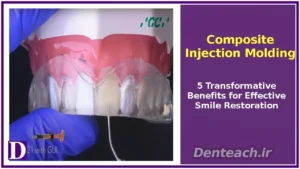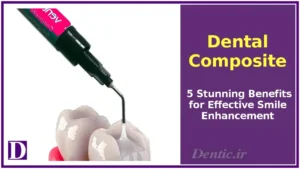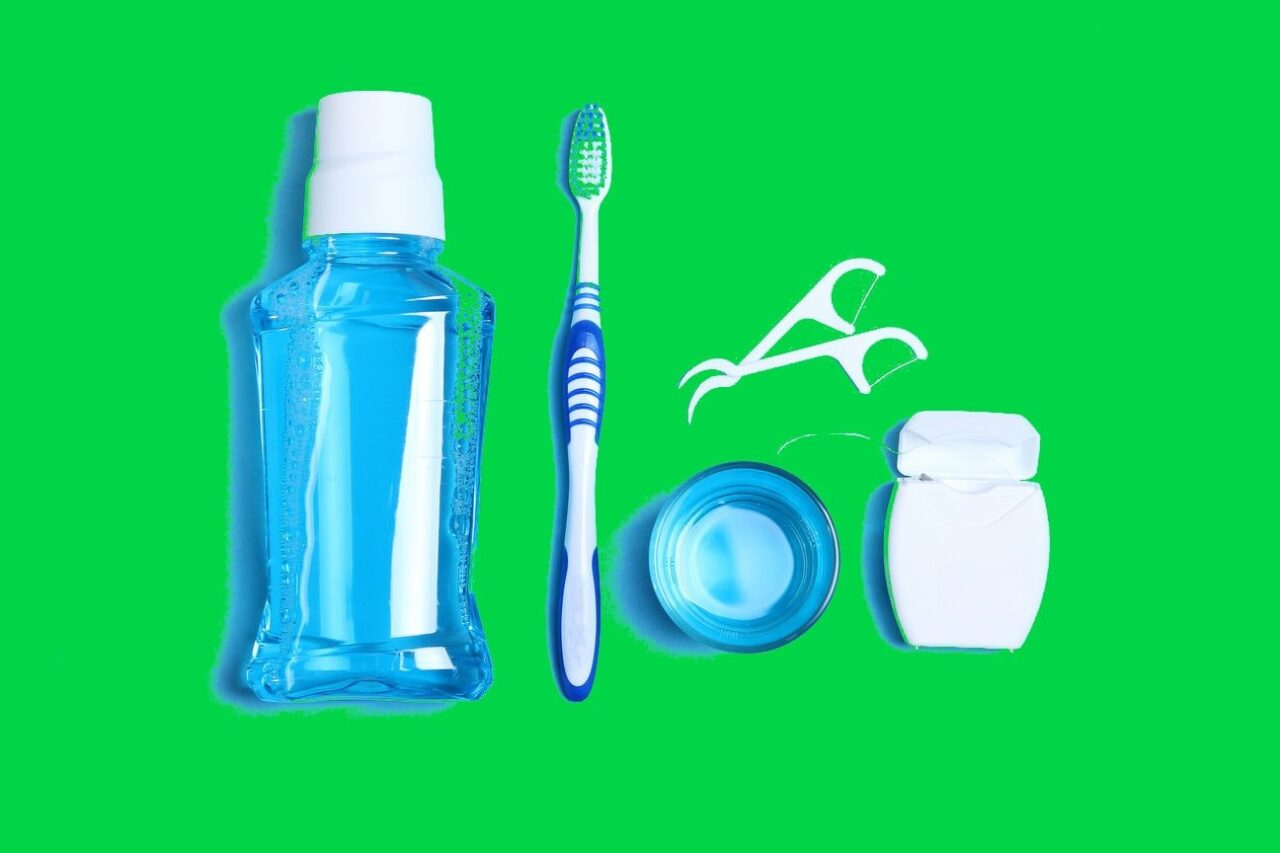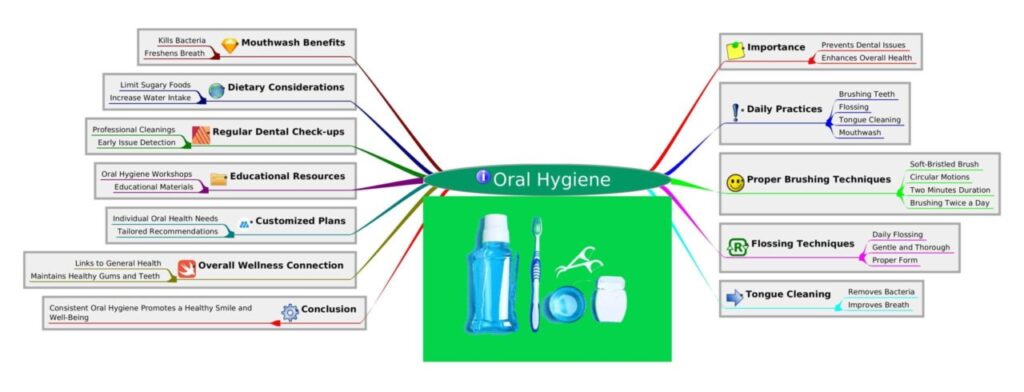
Table of Contents


Composite Injection Molding: 5 Transformative Benefits for Effective Smile Restoration

Dental Composite: 5 Stunning Benefits for Effective Smile Enhancement

Teeth Bleaching: 5 Radiant Benefits for Effective Smile Brightening

Dental Veneer: 5 Stunning Benefits for Effective Smile Enhancement

Implant-Supported Fixed Prostheses: 5 Advanced Benefits for Effective Smile Restoration


Oral Hygiene: The Cornerstone of a Healthy Smile
Oral hygiene encompasses the daily practices of maintaining a clean mouth, teeth, and gums to prevent dental issues and promote overall oral health. Essential for preventing cavities, gum disease, and bad breath, which affect 26% and 50% of U.S. adults respectively according to the CDC, oral hygiene is a lifelong commitment that enhances well-being and confidence. By combining brushing, flossing, mouthwash, and professional care, individuals can achieve a healthy, radiant smile. This article explores the definition, practices, benefits, challenges, and future trends of oral hygiene, emphasizing its critical role in preventive dentistry.
Defining Oral Hygiene
Oral hygiene refers to the routine care of the oral cavity—teeth, gums, tongue, and mucosal tissues—to prevent dental diseases and maintain functionality and aesthetics. It involves daily practices like brushing and flossing, supplemented by professional cleanings and lifestyle choices such as a balanced diet. Effective oral hygiene reduces plaque—a bacterial film causing decay and gum inflammation—and prevents complications like periodontitis or oral cancer. With 90% of dental issues preventable through proper care, per the American Dental Association (ADA), oral hygiene is foundational for oral and systemic health, as poor oral health is linked to conditions like diabetes and heart disease.
Key Oral Hygiene Practices
Oral hygiene comprises several essential components:
- Brushing:
- Frequency: Brush twice daily (morning and bedtime) for two minutes to remove plaque and bacteria.
- Tools: Use a soft-bristled toothbrush, replaced every 3–4 months, and fluoride toothpaste to strengthen enamel.
- Technique: Hold the brush at a 45-degree angle to the gums, using gentle, short strokes to clean outer, inner, and chewing surfaces. Brush the tongue to reduce bacteria and freshen breath.
- Flossing:
- Frequency: Floss once daily to remove plaque and debris from interdental spaces and along the gumline.
- Technique: Gently curve floss around each tooth in a C-shape, moving it up and down to clean both sides without injuring gums.
- Mouthwash:
- Types: Use antibacterial or fluoride mouthwash to kill bacteria and strengthen enamel. Alcohol-free options suit those with sensitivity.
- Usage: Rinse for 30–60 seconds after brushing to enhance plaque control and freshen breath.
- Dental Check-Ups:
- Frequency: Visit the dentist every 6 months for cleanings and exams to detect issues early, such as cavities or gingivitis.
- Purpose: Professional cleanings remove tartar, and exams identify early signs of dental or systemic issues.
- Dental Sealants:
- Applied to molars and premolars, sealants protect pits and fissures from decay, especially in children (50% reduction in cavity risk).
- Healthy Diet:
- Limit sugary snacks and drinks, which fuel bacterial growth, and consume fruits, vegetables, whole grains, and lean proteins to support oral health.
- Drink water to rinse bacteria and maintain saliva production, which neutralizes acids and prevents dry mouth.
Benefits of Oral Hygiene
Consistent oral hygiene offers significant advantages:
- Cavity Prevention: Reduces plaque, lowering cavity risk by 60–70%, per ADA studies.
- Gum Disease Prevention: Prevents gingivitis and periodontitis, which affect 50% of adults, preserving gum and bone health.
- Fresh Breath: Eliminates bacteria causing halitosis, improving breath for 80–90% of individuals.
- Systemic Health: Reduces risks of heart disease, diabetes complications, and respiratory issues linked to poor oral health.
- Aesthetic Enhancement: Maintains bright, stain-free teeth, boosting confidence and social interactions.
- Cost Savings: Prevents costly treatments like fillings ($100–$500) or periodontal therapy ($500–$2,000).
Indications for Enhanced Oral Hygiene
Oral hygiene is critical for:
- General Prevention: Maintaining healthy teeth and gums in all individuals.
- High-Risk Groups: Those with diabetes, smoking history, or orthodontic appliances prone to plaque buildup.
- Gum Disease Signs: Bleeding, swollen, or receding gums indicating early gingivitis.
- Bad Breath: Persistent halitosis requiring improved hygiene or professional intervention.
- Pediatric Care: Children to establish lifelong habits and protect developing teeth.
Challenges and Considerations
Challenges include:
- Compliance: 30% of adults skip daily flossing, increasing plaque buildup risks.
- Cost: Dental visits cost $75–$200 per cleaning, though insurance often covers preventive care.
- Access: Limited access to dental care affects 20% of U.S. adults, necessitating affordable hygiene tools.
- Sensitivity: Overbrushing or aggressive flossing can cause enamel wear or gum recession in 10–15% of cases.
- Lifestyle Factors: High-sugar diets or tobacco use undermine hygiene efforts, requiring behavioral changes.
Nighttime Oral Care
Nighttime routines are crucial:
- Avoid Snacking: Refrain from late-night sugary or acidic foods to minimize bacterial activity overnight.
- Pre-Bed Routine: Brush, floss, and rinse with mouthwash to ensure a clean mouth during sleep, when saliva production decreases.
- Tongue Cleaning: Use a scraper or toothbrush to reduce bacterial load on the tongue, a common cause of bad breath.
Future Trends
Oral hygiene is advancing with innovation:
- Smart Toothbrushes: AI-powered brushes track brushing patterns and provide real-time feedback.
- Bioactive Products: Toothpastes and mouthwashes with remineralizing agents (e.g., calcium phosphate) enhance enamel repair.
- Tele-Dentistry: Virtual consultations improve access to hygiene education and professional advice.
- Sustainable Tools: Eco-friendly brushes and floss made from biodegradable materials gain popularity.
Educational Initiatives
Dental professionals promote oral hygiene:
- School Programs: Teach children proper brushing and flossing, reducing decay rates by 40% in participating communities.
- Public Campaigns: ADA and CDC initiatives raise awareness of oral hygiene’s link to systemic health.
- Patient Guidance: Dentists provide tailored advice on tools and techniques, improving compliance in 70% of patients.
Conclusion
Oral hygiene is the foundation of a healthy smile, preventing dental issues like cavities and gum disease while enhancing overall well-being. Through consistent brushing, flossing, mouthwash use, and regular dental visits, individuals can maintain optimal oral health. With advancements like smart toothbrushes and bioactive products, oral care is more effective than ever. For personalized guidance, consult a certified dentist or visit American Dental Association to build a lifelong oral hygiene routine.
- American Dental Association. (2025). Home Oral Care.
- Centers for Disease Control and Prevention. (2025). Oral Health Prevention.
- Sanz, M., et al. (2017). Non-surgical periodontal therapy: A review. Journal of Clinical Periodontology, 44(Suppl 18), S17–S27.
- American Dental Association. (2025). Oral Health and Prevention.
